#scrape Zomato restaurant data
Explore tagged Tumblr posts
Text
How To Scrape Zomato & Swiggy Data Using Python And BeautifulSoup?
Please read this blog to understand How to Scrape Zomato & Swiggy Data Using Python and BeautifulSoup? Food Data Scrape and use it for different business needs.
Know more : https://medium.com/@fooddatascrape/how-to-scrape-zomato-swiggy-data-using-python-and-beautifulsoup-aeb634bd77de
#Scrape Zomato & Swiggy Data Using Python And BeautifulSoup#Scrape Swiggy and Zomato Data#scrape Zomato restaurant data#scrape Swiggy restaurant data#Scrape data from Zomato and Swiggy#Extracting Swiggy and Zomato Data.
0 notes
Text
Kroger Grocery Data Scraping | Kroger Grocery Data Extraction
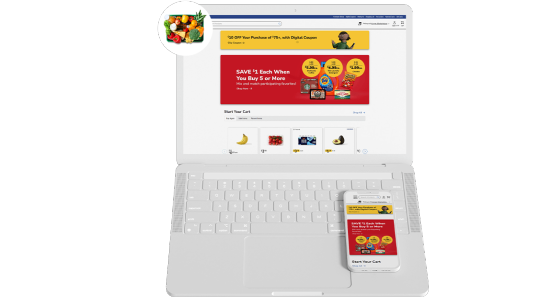
Shopping Kroger grocery online has become very common these days. At Foodspark, we scrape Kroger grocery apps data online with our Kroger grocery data scraping API as well as also convert data to appropriate informational patterns and statistics.
#food data scraping services#restaurantdataextraction#restaurant data scraping#web scraping services#grocerydatascraping#zomato api#fooddatascrapingservices#Scrape Kroger Grocery Data#Kroger Grocery Websites Apps#Kroger Grocery#Kroger Grocery data scraping company#Kroger Grocery Data#Extract Kroger Grocery Menu Data#Kroger grocery order data scraping services#Kroger Grocery Data Platforms#Kroger Grocery Apps#Mobile App Extraction of Kroger Grocery Delivery Platforms#Kroger Grocery delivery#Kroger grocery data delivery
2 notes
·
View notes
Text
1 note
·
View note
Text
How to Scrape Restaurant Data from Zomato

In the digital age, data is a valuable asset, especially when it comes to businesses such as restaurants and pubs. However, understanding the significance of data for marketing, research, and analysis, many companies are eager to build comprehensive databases that encompass essential details about various establishments. One popular source for this information is Zomato, a prominent online platform that provides users with many information about restaurants, pubs, and other eateries. In this article, we will explore how to scrape restaurant data from Zomato to create a database of these establishments in India's eight major metro cities.
About Web Scraping
Web scraping is an automated process of gathering data from websites. It entails developing code that systematically navigates through web pages, locates pertinent information, and organizes it into a structured format, such as a CSV or Excel file. Nevertheless, it is of utmost importance to acquaint ourselves with the terms of service of the target website before commencing web scraping. This precautionary step ensures that the web scraping restaurants data procedure adheres to all rules and policies, preventing potential violations.
About Zomato
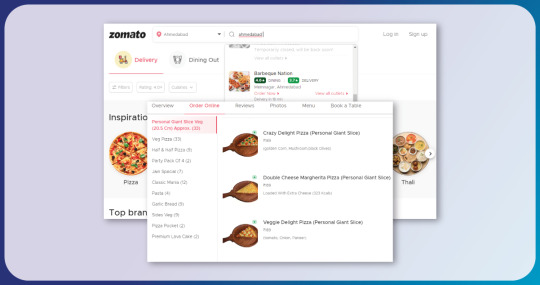
Zomato is a leading online platform that provides a comprehensive guide for users seeking information about restaurants, cafes, bars, and other eateries. It offers a wide range of details that can assist users in making informed decisions when dining out or ordering food. The platform goes beyond merely providing basic restaurant listings and delves into more intricate aspects that enrich the dining experience. One of the primary features of Zomato is its extensive database of restaurants, which spans various cities and countries. Users can access this information to explore their diverse culinary options. Each restaurant listing typically includes essential data, such as the establishment's name, location, cuisine type, and opening hours. Scrape Zomato food delivery data to gain insights into customer ordering behavior.
List of Data Fields

Restaurant Name
Address
City
State
Pin Code
Phone Numbers
Email
Web Scraping Using Python and BeautifulSoup
We have chosen Python, a highly versatile and popular programming language, for our web scraping restaurant data from Zomato project. To extract the required data from Zomato's web pages, we will leverage the power of the "Beautiful Soup" library. This Python library is specifically designed to parse HTML content efficiently, enabling us to extract relevant information seamlessly. With the combined strength of Python and Beautiful Soup, we can efficiently and precisely automate gathering the necessary data from Zomato's website.
Step-by-Step Guide to Scraping Restaurant Data from Zomato
1. Import Necessary Libraries:
When you Scrape Restaurants & Bars Data, make sure you have the required Python libraries installed. Install "requests" and "Beautiful Soup" libraries if not already in your Python environment.
2. Identify Target URLs:
Determine the URLs of Zomato's web pages containing the restaurant data for each of India's eight major metro cities. These URLs will serve as the starting points for our web scraping.
3. Send HTTP Requests:
Use the "requests" library to send HTTP requests to each identified URL. It will fetch the HTML content of the web pages, allowing us to extract relevant data.
4. Parse HTML Content:
Utilize "Beautiful Soup" to parse the HTML content retrieved from the web pages. The library will help us navigate the HTML structure and locate specific elements that contain the desired information, such as restaurant names, addresses, contact details, etc.
5. Extract Data and Store:
Once we have successfully located the relevant elements in the HTML, extract the required data seeking help from Food Delivery And Menu Data Scraping Services. Gather details such as restaurant names, addresses, city, state, PIN codes, phone numbers, and email addresses. Store this information in a structured format, such as a CSV file, database.
6. Data Cleaning and Validation:
After extracting the data, performing data cleaning and validation is crucial. This step involves checking for duplicate entries, handling missing or erroneous data, and ensuring data consistency. Cleaning and validating the data will result in a more accurate and reliable database.
7. Ensure Ethical Web Scraping:
It is essential to adhere to ethical practices throughout the web scraping process. Respect the terms of service of Zomato and any other website you scrape. Avoid overloading the servers with excessive requests, as this could cause disruptions to the website's regular operation.
8. Update the Database Regularly:
To keep the database current and relevant, consider setting up periodic updates. Restaurant information, such as contact details and operating hours, can change over time. Regularly scraping and updating the database will ensure users can access the most up-to-date information.
Important Considerations:
Respect Robots.txt: Before scraping any website, including Zomato, check the "robots.txt" file hosted on the site to see if it allows web scraping and if there are any specific rules or restrictions you need to follow.
Rate Limiting: Implement rate limiting to avoid overloading the Zomato server with too many requests in a short period.
Update Frequency: Regularly update your database to ensure the information remains relevant and up-to-date.
Conclusion: Building a database of restaurants and pubs in India's major metro cities from Zomato using Zomato scraper is an exciting project that requires web scraping skills and a good understanding of data management. By following ethical practices and respecting website policies, you can create a valuable resource that is helpful for marketing research, analytics, and business growth in the hospitality sector. Remember to keep the data accurate and updated to maximize its utility. Happy scraping!
know more:
#scrape restaurant data from Zomato#web scraping restaurants data#Food Delivery And Menu Data Scraping Services#Zomato scraper#Scrape Zomato food delivery data
0 notes
Text
🍔💸 #SameRestaurant. #SameDish. #Differentprices.

Confused about why food costs vary across Swiggy, Zomato, and Uber Eats? You're not alone.
At Actowiz Solutions, we help brands, aggregators, and restaurant chains scrape and compare real-time menu prices and offer data across major food delivery platforms.
🔍 Here’s what we reveal: ✅ Dish-to-dish price comparisons across apps ✅ Delivery charges & platform service fees ✅ Discount offers & loyalty program tracking ✅ Menu variation by city, region, or PIN code ✅ Customer sentiment linked to pricing behavior
💡 If you're managing a cloud kitchen, a food delivery app, or a restaurant chain—menu price intelligence can shape your entire revenue strategy.
📥 Ready to uncover hidden pricing gaps and smarter market opportunities?
👉 Explore the insights: https://www.actowizsolutions.com/restaurant-menu-price-comparison.php
#RestaurantMenuScraping#FoodDeliveryData#SwiggyVsZomato#uberEatsInsights#PricingIntelligence#MenuPriceTracking#DeliveryPlatformAnalytics#DynamicPricing#web scraping#data extraction#data scraping#data solutions
1 note
·
View note
Text

Lensnure Solution provides top-notch Food delivery and Restaurant data scraping services to avail benefits of extracted food data from various Restaurant listings and Food delivery platforms such as Zomato, Uber Eats, Deliveroo, Postmates, Swiggy, delivery.com, Grubhub, Seamless, DoorDash, and much more. We help you extract valuable and large amounts of food data from your target websites using our cutting-edge data scraping techniques.
Our Food delivery data scraping services deliver real-time and dynamic data including Menu items, restaurant names, Pricing, Delivery times, Contact information, Discounts, Offers, and Locations in required file formats like CSV, JSON, XLSX, etc.
Read More: Food Delivery Data Scraping
#data extraction#lensnure solutions#web scraping#web scraping services#food data scraping#food delivery data scraping#extract food ordering data#Extract Restaurant Listings Data
2 notes
·
View notes
Text
Leverage the Zomato Restaurants Dataset With All Postcodes
How Can You Leverage the Zomato Restaurants Dataset With All Postcodes for Hyperlocal Strategy?
Introduction
In a world of food delivery and analytics, where the pace is everything, knowing what's going on at the neighborhood level is crucial. Different areas consume differently, spend differently, and react differently to offers, which is why businesses are moving to Zomato Data Scraping by Postcode, a hyper-targeted study of extracting structured data from one of the largest food ordering platforms in the country.
Zomato Data Scraping by Postcode isn't just about data. It is a detailed localized picture of the food environment, and each pin code represents a unique micro-market comprising demand, price sensitivities, and food preferences. For data-led brands, this means unexpired new ways to be personalized brands, better pricing choices, and efficient delivery—all thanks to access to the Zomato Restaurants Dataset With all Postcodes.
Whether establishing a cloud kitchen or enhancing delivery tracing, Scrape Zomato Restaurant Data with Postcodes to understand hyperlocal trends and consumer behavior curves and fine-tune food-tech agility.
Zooming into Postcode Precision
Zomato is built on a foundation of geo-intelligence. Every listing, offer, rating, and menu item is tied to location. This is no accident — consumer behavior in food ordering is intensely local. What works in Delhi's Rajouri Garden may not resonate in Bengaluru's Indiranagar. By scraping data postcode-wise, businesses can analyze each area on its terms using a detailed Zomato Restaurant Dataset with Locations.
This isn't a one-size-fits-all market anymore. It's a mosaic — and postcode data is your magnifying glass. You can extract local-level patterns and consumer trends with a reliable Zomato Data Scraper for Location Insights. The ability to perform Web Scraping Zomato Delivery Data gives businesses the edge to adapt strategies based on delivery zones, customer preferences, and neighborhood performance.
What Happens When You Slice Zomato by Postcode?
When you break down Zomato's vast dataset postcode-by-postcode, a world of valuable insights opens up. You're no longer looking at a city; you're studying neighborhoods — their favorite cuisines, price preferences, and appetite for offers.
Here's the type of data that becomes actionable at the postcode level:
Top restaurants by user rating
Trending dishes and seasonal favorites
Average order value (AOV) by locality
Delivery time benchmarks by zone
Dominant cuisines in each micro-market
Variations in service fees or platform charges
Promotional trends by location (coupons, discounts)
And more importantly — how each of these variables shifts over time. Monday night dinner rush in Malviya Nagar might not match the Friday evening surge in Koramangala.
Who Uses Postcode-Based Zomato Data?
Multi-Outlet Restaurant Chains: Restaurant groups with branches in multiple cities — or even multiple postcodes within a city — rely on postcode-level data to manage regional menus, pricing, and offers. A ₹200 thali may sell well in a student-heavy area but not in a premium residential block. With this data in hand, brands stop guessing and start optimizing using insights from the Food Delivery Dataset from Zomato.
Cloud Kitchens and Virtual Brands: For virtual kitchens operating without dine-in spaces, data is everything. They use postcode scraping to spot cuisine gaps. If Mexican food is underrepresented in a bustling delivery zone, they can launch a delivery-only Mexican brand targeting just that area. That's the kind of pinpoint precision modern food entrepreneurship requires, enabled through Restaurant Menu Data Scraping.
Food Delivery Logistics Partners: Companies that support last-mile food delivery use postcode-based Zomato data to predict peak times, optimize rider allocation, and plan delivery radius adjustments. By analyzing delivery ETAs and customer reviews per postcode, logistics companies improve reliability and reduce customer churn — a process simplified with the Zomato Food Delivery Scraping API.
Investment & Market Intelligence Firms: VCs, PE firms, and consulting houses now see postcode food data as a treasure trove. Want to evaluate the performance of a QSR chain in South India? Compare Zomato reviews, menu coverage, and repeat order trends across local postcodes. The depth of insights is remarkable, mainly when supported by dedicated Food Delivery Data Scraping Services.
Applications of Zomato Postcode Scraping
Let's break down some real scenarios where Zomato postcode data makes a visible difference:
Smart Store Placement: Knowing where to set up shop is critical when entering a new city. Zomato data reveals not just competition levels but delivery zone density, consumer engagement, and menu gaps. For example, if a locality has a high demand for biryani but few top-rated options, that's your signal—something you can quickly identify using Food Delivery Scraping API Services.
Competitive Analysis, But Better: Why scrape Zomato data for an entire city when you're only competing in 6 zip codes? Postcode-based scraping lets you benchmark against the right competition — those targeting the same households and pin codes as you are.
You get data on:
Menu overlaps
Discount strategies
Ratings over time
Bestseller comparisons
This is where Restaurant Data Intelligence Services gives you the sharp edge for precise local strategy.
Offer Personalization by Location: Discount fatigue is real, but location-aware promotions change the game. Zomato postcode data allows brands to launch time-bound, hyperlocal offers. For instance, if data shows lower Monday sales in Pune's Aundh area, roll out a Monday-only free delivery there. This is how Food Delivery Intelligence Services drives ROI through pinpoint execution.
Menu Engineering for Local Audiences: It's common to find large chains offering the same menu citywide. But that's not what customers want. By analyzing which dishes trend in which postcodes, restaurants can build menu variants that reflect local taste — a vegetarian burger version in Jayanagar, a spicier one in Noida — and visualize all of it through a dynamic Food Price Dashboard.
Postcode-Based Data Feeds = Better Dashboards
Zomato data, when scraped and structured by postcode, powers powerful BI dashboards. Whether you're using Tableau, Power BI, or a custom analytics suite, postcode filters allow decision-makers to:
Visualize customer ratings by locality
Monitor delivery trends across multiple areas
Run A/B tests of new offerings on selected postcodes
Track review sentiment at a street-level granularity
This saves time and boosts agility in campaigns, pricing, and customer experience.
Data Enrichment & Integration
Scraped Zomato data is often just the starting point. Businesses enrich this data by integrating it with other sources like:
Foot traffic data from mobile GPS signals.
Social media sentiment about local restaurants.
Transaction volumes (where available through partnerships).
Google search trends for cuisines per locality.
This fusion creates a 360-degree picture of the food economy, enhancing the predictive power of data analytics efforts.
Unlock hyperlocal food insights—start scraping Zomato data by postcode with our expert solutions today!
Contact us today!
The Future Is Local
Zomato is already moving toward more granular targeting — dynamic search results, neighborhood-based trending sections, and customized delivery windows. Scraping by postcode mirrors this trajectory. It allows you to meet customers where they are, with offerings they genuinely want.
Imagine a world where:
New dishes are launched only in test pin codes
Delivery speeds are optimized based on local traffic
Ratings are studied in postcode clusters
Dynamic pricing adjusts per neighborhood
That's not a future fantasy — it's happening today, and postcode scraping enables it.
What Makes Postcode Scraping Indispensable?
Precision: Neighborhood-level data is more actionable than citywide averages.
Personalization: Fine-tune menus, prices, and promotions per locality.
Performance Monitoring: Spot issues early — whether delivery delays or ratings drops — right down to the zip code.
Strategic Expansion: Don't guess where to launch next. Use data from real consumer behavior by area.
Competitive Advantage: Keep tabs on who's doing well and why — block by block.
How Food Data Scrape Can Help You?
Postcode-Based Data Extraction: We provide hyperlocal scraping solutions that extract Zomato data by specific postcodes, helping you analyze restaurants, menus, ratings, and delivery insights at a granular level.
Restaurant and Menu Intelligence: Our tools capture complete restaurant listings, menu items, pricing, add-ons, and bestseller tags—enabling deep competitor analysis and regional menu optimization.
Real-Time Review & Rating Monitoring: We collect real-time user reviews, ratings, and customer feedback to help you track performance trends, identify local sentiment, and refine service quality.
Discounts & Delivery Insights: We track dynamic delivery charges, estimated times, and promotional offers—offering clarity on regional strategies used by restaurants and aggregators.
Custom Dashboard Integration: We deliver Zomato data in ready-to-use formats (JSON, CSV, API feed) that integrate smoothly with your BI tools, enabling visual analysis and strategic decision-making.
Final Thoughts
Zomato Data Scraping by Postcode is not just a technical capability; it's a strategic necessity in a world where food choices, delivery expectations, and digital interactions vary dramatically across short distances.
As consumer expectations become more localized and food brands become increasingly digital, postcode-based data gives you the clarity to act faster, smarter, and more effectively. For restaurant chains, cloud kitchens, delivery platforms, and market analysts, this approach unlocks the kind of deep, actionable insight that fuels growth in the food-tech space—powered by accurate and timely Food Delivery Datasets.
If you are seeking for a reliable data scraping services, Food Data Scrape is at your service. We hold prominence in Food Data Aggregator and Mobile Restaurant App Scraping with impeccable data analysis for strategic decision-making.
Source>> https://www.fooddatascrape.com/zomato-restaurants-dataset-all-postcodes-strategy.php
#ZomatoRestaurantsDatasetWithallPostcodes#ZomatoDataScrapingbyPostcode#ScrapeZomatoRestaurantDatawithPostcodes#ZomatoRestaurantDatasetwithLocations#ZomatoDataScraperforLocationInsights
0 notes
Text
Zomato India 1M+ Review Insights to Optimize Menu Pricing

Zomato India: Tracking 1M+ Reviews to Help Chains Improve Menu Pricing
Overview
In India’s rapidly evolving dining and food delivery market, customer reviews are more than feedback—they’re pricing intelligence.
With millions of active users, Zomato hosts detailed reviews across dine-in and delivery formats. These reviews often contain customer sentiment around price fairness, portion size, value for money, and competitive comparisons.
At Datazivot, we analyzed over 1 million Zomato reviews across 50 Indian cities to help mid-sized and national restaurant chains optimize menu pricing using review-driven intelligence.
Client Profile
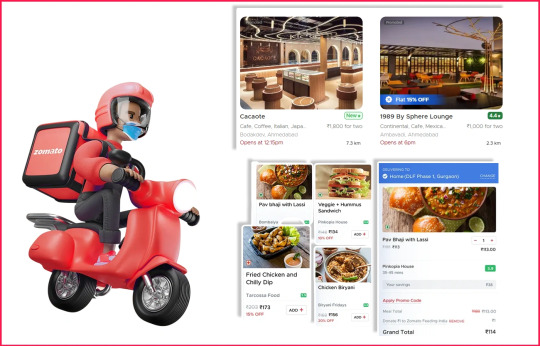
Industry: Casual Dining & Delivery-First Restaurant Chains
Platform Focus: Zomato India (dine-in + online delivery)
Review Volume Analyzed: 1,000,000+
Cities Covered: Mumbai, Delhi, Bengaluru, Hyderabad, Pune, Chennai, Ahmedabad, Lucknow, Kolkata, Jaipur, and more
Service Provided: Review scraping, NLP-based sentiment analysis, pricing sentiment clustering, competitor benchmarking
Objective

The restaurant chains wanted to:
Detect menu items priced “too high” based on review sentiment
Map value-perception gaps city-by-city
Adjust pricing for low-margin or over-priced SKUs
Understand if portion-size matched price expectations
Benchmark against nearby restaurants on price-to-value
What Datazivot Analyzed from Zomato Reviews

Sample Data Extracted by Datazivot

Key Findings from 1M+ Zomato Review Sentiment Analysis

Bengaluru & Chennai were more price-sensitive on single-item meals
Mumbai & Delhi had higher acceptance of premium pricing if portion justified
Tier-2 cities like Lucknow, Indore demanded better combo pricing
“Paneer Tikka,” “Pasta Alfredo,” “Biryani Half” frequently cited as overpriced
Sides like “Extra Mayo,” “Garlic Bread” seen as unjustified add-ons above ₹100
Most 2-star reviews included “small quantity,” “not filling,” or “barely enough”
Use Case

National Casual Dining Chain Improves Pricing Strategy :
Client: SpiceVault India (45-location casual Indian restaurant)
Challenge: Decline in customer ratings and profit margins after recent menu price hikes
What Datazivot Did:
Scraped 400,000 reviews across Zomato India
Isolated 8 dishes with consistent “overpriced” feedback across cities
Built “Pricing Sentiment Index” per SKU and region
Action Taken:
Reduced prices of 3 underperforming dishes by ₹20–₹40
Introduced new combo offers based on city-specific preferences
Added clearer portion size visuals to menu on Zomato listings
Results:
Average rating increased by 0.6 stars for top 5 affected SKUs
Price-related negative reviews dropped by 41%
18% increase in monthly orders from Tier-2 markets
Top Keywords Flagged for Pricing Issues

City-Level Pricing Benchmark Example: Biryani Dishes

Benefits Delivered by Datazivot’s Review-Based Pricing Analysis

Why Zomato Reviews Beat Traditional Price Testing

Conclusion
Don’t Guess Menu Prices - Listen to Your Customers
Your customers are already telling you what’s too expensive, what’s worth it, and what they’ll never reorder again.
With Datazivot, Zomato reviews become more than ratings—they become pricing intelligence tools.
Detect overpricing before churn
Refine pricing based on location and SKU sentiment
Improve value perception and boost orders
Strengthen profit margins without sacrificing trust
Want to Optimize Menu Pricing Using Zomato Reviews?
Contact Datazivot for a free pricing sentiment analysis across your Zomato listings—city-wise, dish-wise, and competitor-benchmarked.
Originally published at https://www.datazivot.com/zomato-india-tracking-1m-reviews-improve-chain-menu-pricing.php
#ScrapeZomatoReviewsData#ZomatoDeliveryReviewsScraping#AnalyzerZomatoReviews#ZomatoReviewSentimentAnalysis#ReviewsAcrossZomatoIndia#ZomatoReviewBasedPricingAnalysis#ZomatoPricingIntelligence#ZomatoMenuPricingReviewsData
0 notes
Text
Restaurant Trend Analysis with Food Delivery Data | ArcTechnolabs
Introduction
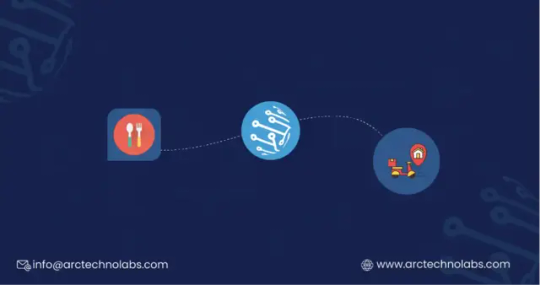
Food delivery isn’t just about convenience anymore—it’s a data goldmine. In fast-paced markets like the UAE and Singapore, food delivery platforms serve as real-time mirrors of restaurant performance, cuisine trends, pricing models, and consumer preferences.
ArcTechnolabs brings powerful visibility into this ecosystem with ready-made datasets scraped from top platforms such as Talabat, Deliveroo, Zomato, Careem NOW (UAE), GrabFood, and Foodpanda (Singapore).
If you're building a restaurant analytics platform, benchmarking food delivery pricing, or launching a virtual kitchen, our datasets deliver instant, structured, and geo-tagged intelligence.
Why UAE and Singapore?
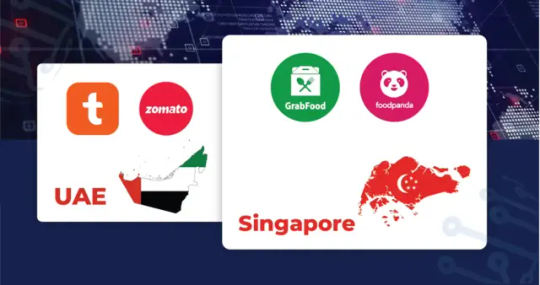
UAE: Burgeoning QSR chains, cloud kitchen boom, and highly competitive platforms like Talabat and Zomato.
Singapore: Tech-savvy urban population, high delivery frequency, and GrabFood/Foodpanda dominance.
Both countries represent a gold standard for online ordering behavior and digital F&B operations.
What ArcTechnolabs Provides
ArcTechnolabs delivers structured, high-quality datasets extracted from leading food delivery platforms. These datasets include the following key attributes:
-Restaurant Name: The exact listing name as it appears on food delivery platforms. -Cuisine Type: Cuisine categories such as Chinese, Indian, Fast Food, Arabic, etc. -Item Names: Menu items with details including portion size. -Item Prices: Both original and discounted prices. -Delivery Fee: Platform-specific delivery charges. -Ratings: Average customer rating along with total review count. -Delivery Time Estimate: Estimated delivery time as shown on the platform (e.g., 30–40 minutes). -Offer/Discount: Promotional offers such as percentage discounts, coupons, and bundle deals. -Scraped From: Platforms including Zomato, GrabFood, Deliveroo, Talabat, Foodpanda, and others.
Sample Dataset – UAE (Talabat + Zomato)
Restaurant: Al Baik Express
Cuisine: Arabic
Item: Chicken Broast
Price: AED 25.00
Rating: 4.5
Estimated Delivery Time: 30–40 minutes
Restaurant: Burgerizzr
Cuisine: Fast Food
Item: Double Burger
Price: AED 32.00
Rating: 4.3
Estimated Delivery Time: 20–30 minutes
Sample Dataset – Singapore (GrabFood + Foodpanda)
Restaurant: Boon Tong Kee
Cuisine: Chinese
Item: Steamed Chicken
Price: SGD 12.80
Rating: 4.6
Estimated Delivery Time: 25–35 minutes
Restaurant: Crave Nasi Lemak
Cuisine: Malay
Item: Chicken Wing Set
Price: SGD 9.90
Rating: 4.4
Estimated Delivery Time: 20–25 minutes
Use Cases for Food Delivery Data
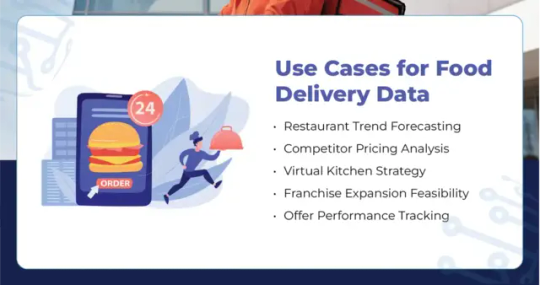
1. Restaurant Trend Forecasting
Track top-performing cuisines, trending dishes, and delivery frequency by city.
2. Competitor Pricing Analysis
Compare QSR pricing across cities/platforms to optimize your own.
3. Virtual Kitchen Strategy
Use delivery times, cuisine gaps, and demand signals to plan kitchen placement.
4. Franchise Expansion Feasibility
Measure brand performance before launching in new areas.
5. Offer Performance Tracking
Analyze how discount combos affect order ratings and visibility.
How ArcTechnolabs Builds These Datasets
Platform Selection: We target top food delivery apps across UAE and Singapore.
Geo-Based Filtering: Listings are segmented by city, area, and delivery radius.
Smart Scraping Engines: Handle pagination, time delays, JavaScript rendering.
Normalization: Menu names, price formatting, cuisine tagging, and duplication removal.
Delivery ETA Tracking: Extract exact delivery time estimates across dayparts.
Data Refresh Options
ArcTechnolabs offers flexible data refresh options to match your operational or analytical needs:
Hourly Updates
Channel: API or JSON feed
Format: Real-time data access
Daily Updates
Channel: Email delivery or direct download
Format: CSV or Excel
Weekly Trend Reports
Channel: Shared via email or Google Drive
Format: Summary reports with key insights
Target Cities ArcTechnolabs focuses on high-demand urban areas for precise, city-level analysis.
UAE:
Dubai
Abu Dhabi
Sharjah
Ajman
Al Ain
Singapore:
Central
Tampines
Jurong
Bukit Batok
Ang Mo Kio
Customization Options You can tailor your dataset to meet specific business goals or research parameters. Customization options include:
Cuisine Filter: Focus on select cuisines such as Indian, Arabic, or Chinese.
Platform Filter: Limit data to a specific platform like Talabat or GrabFood.
Time of Day: Filter listings by lunch, dinner, or early morning availability.
Restaurant Type: Choose data only from cloud kitchens or dine-in restaurants.
Discount Status: Include only restaurants currently offering deals or promotions.
Benefits of ArcTechnolabs’ Pre-Scraped Datasets

Fast deployment
City-wise trend segmentation
Competitor menu benchmarks
Multi-platform support
Clean & normalized structure
Get Started in 3 Steps
Request your sample dataset
Choose your region, platform & cuisine focus
Start receiving insights via API or scheduled exports
Visit ArcTechnolabs.com to request a demo or consultation.
Conclusion
The future of food delivery is data-driven. Whether you're analyzing dish popularity, price competitiveness, or delivery performance— ArcTechnolabs equips you with plug-and-play food delivery datasets that transform static restaurant listings into live market intelligence.
Get smart. Get fast. Get food trend insights—powered by ArcTechnolabs.
Source >> https://www.arctechnolabs.com/restaurant-trends-with-food-delivery-dataset.php
#ReadyMadeDatasets#RealTimeRestaurantAnalyticsDataset#ZomatoDatasetForRestaurantAnalysis#RestaurantTrendAnalysisDatasets#RestaurantPerformanceDataScraping#FoodDeliveryPricingDatasets#WebScrapingServices
0 notes
Text
Tapping into Fresh Insights: Kroger Grocery Data Scraping
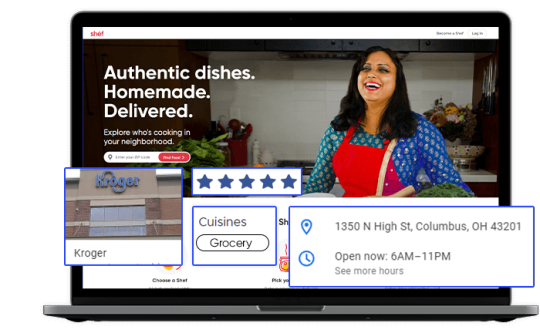
In today's data-driven world, the retail grocery industry is no exception when it comes to leveraging data for strategic decision-making. Kroger, one of the largest supermarket chains in the United States, offers a wealth of valuable data related to grocery products, pricing, customer preferences, and more. Extracting and harnessing this data through Kroger grocery data scraping can provide businesses and individuals with a competitive edge and valuable insights. This article explores the significance of grocery data extraction from Kroger, its benefits, and the methodologies involved.
The Power of Kroger Grocery Data
Kroger's extensive presence in the grocery market, both online and in physical stores, positions it as a significant source of data in the industry. This data is invaluable for a variety of stakeholders:
Kroger: The company can gain insights into customer buying patterns, product popularity, inventory management, and pricing strategies. This information empowers Kroger to optimize its product offerings and enhance the shopping experience.
Grocery Brands: Food manufacturers and brands can use Kroger's data to track product performance, assess market trends, and make informed decisions about product development and marketing strategies.
Consumers: Shoppers can benefit from Kroger's data by accessing information on product availability, pricing, and customer reviews, aiding in making informed purchasing decisions.
Benefits of Grocery Data Extraction from Kroger
Market Understanding: Extracted grocery data provides a deep understanding of the grocery retail market. Businesses can identify trends, competition, and areas for growth or diversification.
Product Optimization: Kroger and other retailers can optimize their product offerings by analyzing customer preferences, demand patterns, and pricing strategies. This data helps enhance inventory management and product selection.
Pricing Strategies: Monitoring pricing data from Kroger allows businesses to adjust their pricing strategies in response to market dynamics and competitor moves.
Inventory Management: Kroger grocery data extraction aids in managing inventory effectively, reducing waste, and improving supply chain operations.
Methodologies for Grocery Data Extraction from Kroger
To extract grocery data from Kroger, individuals and businesses can follow these methodologies:
Authorization: Ensure compliance with Kroger's terms of service and legal regulations. Authorization may be required for data extraction activities, and respecting privacy and copyright laws is essential.
Data Sources: Identify the specific data sources you wish to extract. Kroger's data encompasses product listings, pricing, customer reviews, and more.
Web Scraping Tools: Utilize web scraping tools, libraries, or custom scripts to extract data from Kroger's website. Common tools include Python libraries like BeautifulSoup and Scrapy.
Data Cleansing: Cleanse and structure the scraped data to make it usable for analysis. This may involve removing HTML tags, formatting data, and handling missing or inconsistent information.
Data Storage: Determine where and how to store the scraped data. Options include databases, spreadsheets, or cloud-based storage.
Data Analysis: Leverage data analysis tools and techniques to derive actionable insights from the scraped data. Visualization tools can help present findings effectively.
Ethical and Legal Compliance: Scrutinize ethical and legal considerations, including data privacy and copyright. Engage in responsible data extraction that aligns with ethical standards and regulations.
Scraping Frequency: Exercise caution regarding the frequency of scraping activities to prevent overloading Kroger's servers or causing disruptions.
Conclusion
Kroger grocery data scraping opens the door to fresh insights for businesses, brands, and consumers in the grocery retail industry. By harnessing Kroger's data, retailers can optimize their product offerings and pricing strategies, while consumers can make more informed shopping decisions. However, it is crucial to prioritize ethical and legal considerations, including compliance with Kroger's terms of service and data privacy regulations. In the dynamic landscape of grocery retail, data is the key to unlocking opportunities and staying competitive. Grocery data extraction from Kroger promises to deliver fresh perspectives and strategic advantages in this ever-evolving industry.
#grocerydatascraping#restaurant data scraping#food data scraping services#food data scraping#fooddatascrapingservices#zomato api#web scraping services#grocerydatascrapingapi#restaurantdataextraction
4 notes
·
View notes
Text
📊 Unlock Deeper Food Delivery Intelligence with City-Wise Menu Trend Analysis Using Zomato & Swiggy Scraping API

In today's dynamic food delivery landscape, staying relevant means understanding how preferences shift not just nationally—but city by city. By harnessing the power of our #ZomatoScrapingAPI and #SwiggyScrapingAPI, businesses can extract granular data to reveal #menu trends, #dish popularity, #pricing variations, and #regional consumer preferences across urban centers.
Whether you're a #restaurant chain planning regional expansion, a #foodtech startup refining your offerings, or a #marketresearch firm delivering insights to clients—real-time, city-specific menu analytics are essential.
With our robust scraping solution, you can: ✔️ Analyze which items are trending in key metro areas ✔️ Adjust your menu for hyperlocal appeal ✔️ Monitor competitor offerings and pricing strategies ✔️ Predict demand patterns based on regional consumption behavior
This level of #data granularity not only boosts operational efficiency but also helps refine marketing strategies, product positioning, and business forecasting.
0 notes
Text
Monitor Competitor Pricing with Food Delivery Data Scraping

In the highly competitive food delivery industry, pricing can be the deciding factor between winning and losing a customer. With the rise of aggregators like DoorDash, Uber Eats, Zomato, Swiggy, and Grubhub, users can compare restaurant options, menus, and—most importantly—prices in just a few taps. To stay ahead, food delivery businesses must continually monitor how competitors are pricing similar items. And that’s where food delivery data scraping comes in.
Data scraping enables restaurants, cloud kitchens, and food delivery platforms to gather real-time competitor data, analyze market trends, and adjust strategies proactively. In this blog, we’ll explore how to use web scraping to monitor competitor pricing effectively, the benefits it offers, and how to do it legally and efficiently.
What Is Food Delivery Data Scraping?
Data scraping is the automated process of extracting information from websites. In the food delivery sector, this means using tools or scripts to collect data from food delivery platforms, restaurant listings, and menu pages.
What Can Be Scraped?
Menu items and categories
Product pricing
Delivery fees and taxes
Discounts and special offers
Restaurant ratings and reviews
Delivery times and availability
This data is invaluable for competitive benchmarking and dynamic pricing strategies.
Why Monitoring Competitor Pricing Matters
1. Stay Competitive in Real Time
Consumers often choose based on pricing. If your competitor offers a similar dish for less, you may lose the order. Monitoring competitor prices lets you react quickly to price changes and stay attractive to customers.
2. Optimize Your Menu Strategy
Scraped data helps identify:
Popular food items in your category
Price points that perform best
How competitors bundle or upsell meals
This allows for smarter decisions around menu engineering and profit margin optimization.
3. Understand Regional Pricing Trends
If you operate across multiple locations or cities, scraping competitor data gives insights into:
Area-specific pricing
Demand-based variation
Local promotions and discounts
This enables geo-targeted pricing strategies.
4. Identify Gaps in the Market
Maybe no competitor offers free delivery during weekdays or a combo meal under $10. Real-time data helps spot such gaps and create offers that attract value-driven users.
How Food Delivery Data Scraping Works
Step 1: Choose Your Target Platforms
Most scraping projects start with identifying where your competitors are listed. Common targets include:
Aggregators: Uber Eats, Zomato, DoorDash, Grubhub
Direct restaurant websites
POS platforms (where available)
Step 2: Define What You Want to Track
Set scraping goals. For pricing, track:
Base prices of dishes
Add-ons and customization costs
Time-sensitive deals
Delivery fees by location or vendor
Step 3: Use Web Scraping Tools or Custom Scripts
You can either:
Use scraping tools like Octoparse, ParseHub, Apify, or
Build custom scripts in Python using libraries like BeautifulSoup, Selenium, or Scrapy
These tools automate the extraction of relevant data and organize it in a structured format (CSV, Excel, or database).
Step 4: Automate Scheduling and Alerts
Set scraping intervals (daily, hourly, weekly) and create alerts for major pricing changes. This ensures your team is always equipped with the latest data.
Step 5: Analyze the Data
Feed the scraped data into BI tools like Power BI, Google Data Studio, or Tableau to identify patterns and inform strategic decisions.
Tools and Technologies for Effective Scraping
Popular Tools:
Scrapy: Python-based framework perfect for complex projects
BeautifulSoup: Great for parsing HTML and small-scale tasks
Selenium: Ideal for scraping dynamic pages with JavaScript
Octoparse: No-code solution with scheduling and cloud support
Apify: Advanced, scalable platform with ready-to-use APIs
Hosting and Automation:
Use cron jobs or task schedulers for automation
Store data on cloud databases like AWS RDS, MongoDB Atlas, or Google BigQuery
Legal Considerations: Is It Ethical to Scrape Food Delivery Platforms?
This is a critical aspect of scraping.
Understand Platform Terms
Many websites explicitly state in their Terms of Service that scraping is not allowed. Scraping such platforms can violate those terms, even if it’s not technically illegal.
Avoid Harming Website Performance
Always scrape responsibly:
Use rate limiting to avoid overloading servers
Respect robots.txt files
Avoid scraping login-protected or personal user data
Use Publicly Available Data
Stick to scraping data that’s:
Publicly accessible
Not behind paywalls or logins
Not personally identifiable or sensitive
If possible, work with third-party data providers who have pre-approved partnerships or APIs.
Real-World Use Cases of Price Monitoring via Scraping
A. Cloud Kitchens
A cloud kitchen operating in three cities uses scraping to monitor average pricing for biryani and wraps. Based on competitor pricing, they adjust their bundle offers and introduce combo meals—boosting order value by 22%.
B. Local Restaurants
A family-owned restaurant tracks rival pricing and delivery fees during weekends. By offering a free dessert on orders above $25 (when competitors don’t), they see a 15% increase in weekend orders.
C. Food Delivery Startups
A new delivery aggregator monitors established players’ pricing to craft a price-beating strategy, helping them enter the market with aggressive discounts and gain traction.
Key Metrics to Track Through Price Scraping
When setting up your monitoring dashboard, focus on:
Average price per cuisine category
Price differences across cities or neighborhoods
Top 10 lowest/highest priced items in your segment
Frequency of discounts and offers
Delivery fee trends by time and distance
Most used upsell combinations (e.g., sides, drinks)
Challenges in Food Delivery Data Scraping (And Solutions)
Challenge 1: Dynamic Content and JavaScript-Heavy Pages
Solution: Use headless browsers like Selenium or platforms like Puppeteer to scrape rendered content.
Challenge 2: IP Blocking or Captchas
Solution: Rotate IPs with proxies, use CAPTCHA-solving tools, or throttle request rates.
Challenge 3: Frequent Site Layout Changes
Solution: Use XPaths and CSS selectors dynamically, and monitor script performance regularly.
Challenge 4: Keeping Data Fresh
Solution: Schedule automated scraping and build change detection algorithms to prioritize meaningful updates.
Final Thoughts
In today’s digital-first food delivery market, being reactive is no longer enough. Real-time competitor pricing insights are essential to survive and thrive. Data scraping gives you the tools to make informed, timely decisions about your pricing, promotions, and product offerings.
Whether you're a single-location restaurant, an expanding cloud kitchen, or a new delivery platform, food delivery data scraping can help you gain a critical competitive edge. But it must be done ethically, securely, and with the right technologies.
0 notes
Text
🍔💸 Why is the same burger cheaper on #Swiggy than on #Zomato?





Welcome to the world of real-time #FoodDeliveryPricing, where menu rates shift between platforms—even for the exact same dish.
At Actowiz Solutions, we’ve analyzed thousands of listings across cities to uncover:
✅ Price gaps across food delivery apps
✅ Dynamic pricing strategies by restaurants
✅ Platform-driven promotions and markups
✅ Regional variations in menu rates
Whether you're a restaurant, #QSRChain, or aggregator—these insights help you #Benchmark, #Strategize, and #CompeteBetter.
📊 In a world of instant convenience, menu data = market power.
📥 Let’s help you scrape, compare, and act faster. Explore the full comparison now 👇
0 notes
Text
Scrape Zomato Food Reviews Data for Important Insights
Scrape Zomato Food Delivery Reviews Data for insightful restaurant reviews data, providing valuable insights for food enthusiasts and businesses alike.
#ScrapeZomatoFoodReviewsData#ZomatoRestaurantReviewsDataScraping#ScrapeZomatoData#ZomatoFoodReviewDataCollection#ExtractZomatoReviewData
0 notes
Text
NLP Sentiment Analysis | Reviews Monitoring for Actionable Insights
NLP Sentiment Analysis-Powered Insights from 1M+ Online Reviews

Business Challenge

A global enterprise with diversified business units in retail, hospitality, and tech was inundated with customer reviews across dozens of platforms:
Amazon, Yelp, Zomato, TripAdvisor, Booking.com, Google Maps, and more. Each platform housed thousands of unstructured reviews written in multiple languages — making it ideal for NLP sentiment analysis to extract structured value from raw consumer feedback.
The client's existing review monitoring efforts were manual, disconnected, and slow. They lacked a modern review monitoring tool to streamline analysis. Key business leaders had no unified dashboard for customer experience (CX) trends, and emerging issues often went unnoticed until they impacted brand reputation or revenue.
The lack of a central sentiment intelligence system meant missed opportunities not only for service improvements, pricing optimization, and product redesign — but also for implementing a robust Brand Reputation Management Service capable of safeguarding long-term consumer trust.
Key pain points included:
No centralized system for analyzing cross-platform review data
Manual tagging that lacked accuracy and scalability
Absence of real-time CX intelligence for decision-makers
Objective
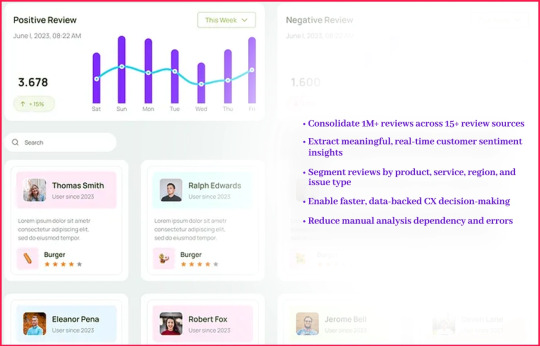
The client set out to:
Consolidate 1M+ reviews across 15+ review sources
Extract meaningful, real-time customer sentiment insights
Segment reviews by product, service, region, and issue type
Enable faster, data-backed CX decision-making
Reduce manual analysis dependency and errors
Their goal: Build a scalable sentiment analysis system using a robust Sentiment Analysis API to drive operational, marketing, and strategic decisions across business units.
Our Approach

DataZivot designed and deployed a fully-managed NLP-powered review analytics pipeline, customized for the client's data structure and review volume. Our solution included:
1. Intelligent Review Scraping
Automated scraping from platforms like Zomato, Yelp, Amazon, Booking.com
Schedule-based data refresh (daily & weekly)
Multi-language support (English, Spanish, German, Hindi)
2. NLP Sentiment Analysis
Hybrid approach combining rule-based tagging with transformer-based models (e.g., BERT, RoBERTa)
Sentiment scores (positive, neutral, negative) and sub-tagging (service, delivery, product quality)
Topic modeling to identify emerging concerns
3. Categorization & Tagging
Entity recognition (locations, product names, service mentions)
Keyword extraction for trend tracking
Complaint type detection (delay, quality, attitude, etc.)
4. Insights Dashboard Integration
Custom Power BI & Tableau dashboards
Location, time, sentiment, and keyword filters
Export-ready CSV/JSON options for internal analysts
Results & Competitive Insights

DataZivot's solution produced measurable results within the first month:
These improvements gave the enterprise:
Faster product feedback loops
Better pricing and menu optimization for restaurants
Localized insights for store/service operations
Proactive risk mitigation (e.g., before issues trended on social media)
Want to See the Dashboard in Action?
Book a demo or download a Sample Reviews Dataset to experience the power of our sentiment engine firsthand.
Contact Us Today!
Dashboard Highlights

The custom dashboard provided by DataZivot enabled:
Review Sentiment Dashboard featuring sentiment trend graphs (daily, weekly, monthly)
Top Keywords by Sentiment Type ("slow service", "friendly staff")
Geo Heatmaps showing regional sentiment fluctuations
Comparative Brand Insights (across subsidiaries or competitors)
Dynamic Filters by platform, region, product, date, language
Tools & Tech Stack

To deliver the solution at scale, we utilized:
Scraping Frameworks: Scrapy, Selenium, BeautifulSoup
NLP Libraries: spaCy, TextBlob, Hugging Face Transformers (BERT, RoBERTa)
Cloud Infrastructure: AWS Lambda, S3, EC2, Azure Functions
Dashboards & BI: Power BI, Tableau, Looker
Languages Used: Python, SQL, JavaScript (for dashboard custom scripts)
Strategic Outcome

By leveraging DataZivot’s NLP infrastructure, the enterprise achieved:
Centralized CX Intelligence: CX leaders could make decisions based on real-time, data-backed feedback
Cross-Industry Alignment: Insights across retail, hospitality, and tech units led to unified improvement strategies
Brand Perception Tracking: Marketing teams tracked emotional tone over time and correlated with ad campaigns
Revenue Impact: A/B-tested updates (product tweaks, price changes) showed double-digit improvements in review sentiment and NPS
Conclusion
This case study proves that large-scale review analytics is not only possible — it’s essential for modern enterprises managing multiple consumer-facing touchpoints. DataZivot’s approach to scalable NLP and real-time sentiment tracking empowered the client to proactively manage their brand reputation, uncover hidden customer insights, and drive growth across verticals.
If your organization is facing similar challenges with fragmented review data, inconsistent feedback visibility, or a slow response to customer sentiment — DataZivot’s sentiment intelligence platform is your solution.
#NLPSentimentAnalysis#CrossPlatformReviewData#SentimentAnalysisAPI#BrandReputationManagement#ReviewMonitoringTool#IntelligentReviewScraping#ReviewSentimentDashboard#RealTimeSentimentTracking#ReviewAnalytics
0 notes
Text
Zomato API - Zomato Scraper - Zomato Review API

In the realm of food and restaurant discovery, Zomato stands as a significant player. For developers and data enthusiasts, the platform offers several APIs that provide access to its extensive database of restaurants, reviews, and user-generated content. In this blog, we delve into the Zomato API ecosystem, focusing on three key components: the Zomato API, Zomato Scraper, and Zomato Review API. Understanding these tools can unlock a wealth of opportunities for creating innovative applications and gaining insights into dining trends.
The Zomato API
Overview
The Zomato API is a powerful tool that allows developers to access Zomato’s vast collection of restaurant data. Whether you’re building a restaurant recommendation app, a food delivery service, or conducting market research, this API provides a plethora of endpoints that can meet your needs.
Key Features
Restaurant Search and Details:
Retrieve information about restaurants, including name, location, cuisine, and average cost.
Search for restaurants based on various criteria like location, cuisine type, and budget.
Location Data:
Access details about specific locations including cities, and neighborhoods, and their popularity.
Use geo-coordinates to find restaurants nearby.
Cuisine and Establishment Types:
Get a list of available cuisines in a specified location.
Discover different types of establishments such as cafes, bars, and fine dining options.
User Reviews:
Fetch reviews and ratings for restaurants.
Access user-generated content that provides insights into customer experiences.
How to Use
To get started with the Zomato API:
Sign Up: Register on the Zomato Developers portal to get an API key.
Documentation: Review the API documentation to understand the available endpoints and how to use them.
Integration: Use your API key to authenticate requests and integrate the data into your application.
Zomato Scraper
Overview
While the official Zomato API offers extensive access to data, some information might not be available through the API. In such cases, a Zomato Scraper can be a valuable tool. Web scraping involves extracting data directly from web pages, providing a way to collect information not exposed by the API.
Key Uses
Custom Data Extraction:
Extract details that might not be available through the API, such as additional reviews or specific dish information.
Data for Analysis:
Collect large amounts of data for sentiment analysis, market research, or machine learning models.
Monitoring Changes:
Track changes in restaurant details, menu items, and pricing over time.
Ethical Considerations
Using a Zomato Scraper requires careful consideration of Zomato’s terms of service and legal guidelines. It's crucial to:
Respect Robots.txt: Check and comply with Zomato’s robots.txt file to ensure you are not violating their scraping policies.
Avoid Overloading: Implement rate limits to avoid overloading Zomato’s servers.
Use Responsibly: Ensure that the scraped data is used ethically and for legitimate purposes.
Zomato Review API
Overview
For applications that focus on user-generated content and feedback, the Zomato Review API is an invaluable resource. This API specifically targets reviews and ratings provided by users, offering detailed insights into customer satisfaction and dining experiences.
Key Features
Review Data:
Access detailed reviews including the user’s comments, ratings, and review date.
Filter reviews by date, rating, or relevance.
User Information:
Obtain information about the reviewers, such as their user profile and review history.
Analyze patterns in reviews from specific users or demographics.
Sentiment Analysis:
Use review data to perform sentiment analysis, gauging public opinion and trends.
Identify key themes and sentiments in user feedback.
How to Use
To leverage the Zomato Review API:
Obtain Access: Similar to the Zomato API, secure access by registering and obtaining an API key.
Explore Endpoints: Use the provided endpoints to fetch reviews and associated data.
Integrate and Analyze: Integrate the review data into your system and use it for various analysis and insights.
0 notes